Blog
NGC 1706 is a spiral galaxy located approximately 227 million light-years from Earth. Also referred to as ESO 85-7 and LEDA 16220, the galaxy is seen face-on toward the constellation of Dorado. NGC 1706 was discovered on December 25, 1837 by the British astronomer John Herschel. It belongs to the LDC357 group, a small gathering of galaxies which are gravitationally bound and hence relatively close to each other. “Around half of the galaxies we know of in the Universe belong to some kind of group, making them incredibly common cosmic structures,” the Hubble astronomers said. “Our home galaxy, the Milky Way, belongs to the Local Group, which also contains the Andromeda Galaxy, the Large and Small Magellanic Clouds, and the Triangulum Galaxy.” “Groups are the smallest of galactic gatherings,” the researchers added. “Others are clusters, which can comprise hundreds of thousands of galaxies bound loosely together by gravity, and subsequent superclusters, which bring together numerous clusters into a single entity.”
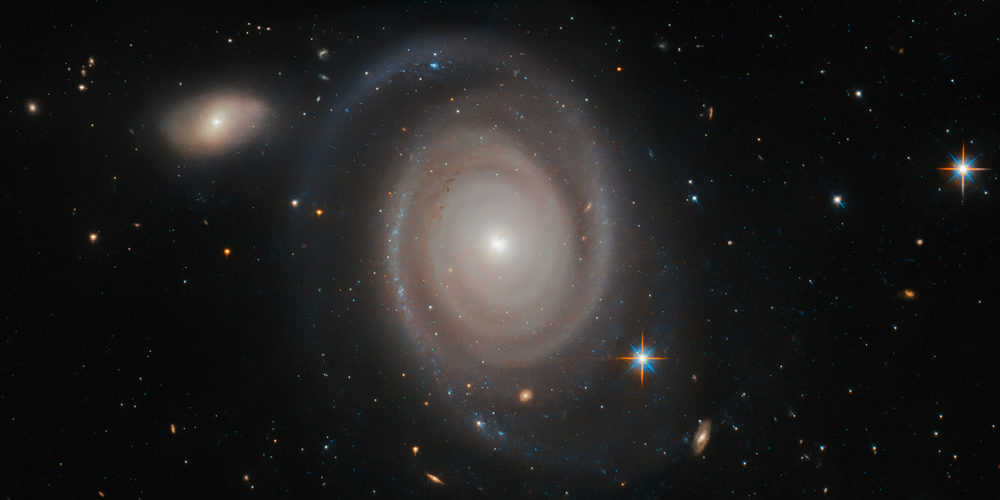
Idris Muhammad (Arabic: إدريس محمد; born Leo Morris; November 13, 1939 – July 29, 2014) was an American jazz drummer who recorded with Ahmad Jamal, Lou Donaldson, Pharoah Sanders, and Tete Montoliu.
Born Leo Morris in New Orleans, he grew up in the city’s 13th Ward. He showed early talent as a percussionist and began his professional career while still a teenager, playing on Fats Domino’s “Blueberry Hill“.
He toured with Sam Cooke, and later worked with Jerry Butler and Curtis Mayfield, mostly working in R&B until the mid-1960s, before going on to work more frequently in jazz. Muhammad was an endorser of Istanbul Agop Cymbals. He died aged 74 in 2014.
more...Hampton Barnett Hawes, Jr. (November 13, 1928 – May 22, 1977) was an American jazz pianist. He was the author of the memoir Raise Up Off Me, which won the Deems-Taylor Award for music writing in 1975. Hampton Hawes was born on November 13, 1928, in Los Angeles, California. His father, Hampton Hawes, Sr., was minister of Westminster Presbyterian Church in Los Angeles. His mother, the former Gertrude Holman, was Westminster’s church pianist. Hawes’ first experience with the piano was as a toddler sitting on his mother’s lap while she practiced. He was reportedly able to pick out fairly complex tunes by the age of three.
Hawes was self-taught; by his teens he was playing with the leading jazz musicians on the West Coast, including Dexter Gordon, Wardell Gray, Art Pepper, Shorty Rogers, and Teddy Edwards. His second professional job, at 18, was playing for eight months with the Howard McGhee Quintet at the Hi De Ho Club, in a group that included Charlie Parker. By late 1947, Hawes’ reputation was leading to studio recording work. Early studio dates included work for George L. “Happy” Johnson, Teddy Edwards, Sonny Criss, and Shorty Rogers. From 1948 to 1952, he was recorded live on several occasions at Los Angeles-area jazz clubs including The Haig, The Lighthouse, and The Surf Club. By December of 1952, he had recorded eight songs under his own name for Prestige Records with a quartet featuring Larry Bunker on vibraphone.
After serving in the U.S. Army in Japan from 1952 to 1954, Hawes formed his own trio, with bassist Red Mitchell and drummer Chuck Thompson. The three-record Trio sessions made by this group in 1955 on Contemporary Records were considered some of the finest records to come out of the West Coast at the time.[citation needed] The next year, Hawes added guitarist Jim Hall for the All Night Sessions. These were three records made during a non-stop overnight recording session.
After a six-month national tour in 1956, Hawes won the “New Star of the Year” award in Down Beat magazine, and “Arrival of the Year” in Metronome. The following year, he recorded in New York City with Charles Mingus on the album Mingus Three (Jubilee, 1957).
Benjamin “Bennie” Moten (November 13, 1894 – April 2, 1935) was an American jazz pianist and band leader born and raised in Kansas City, Missouri.
He led the Kansas City Orchestra, the most important of the regional, blues-based orchestras active in the Midwest in the 1920s, and helped to develop the riffing style that would come to define many of the 1930s Big Bands.
Moten started making music from an early age and developed as a pianist, pulling together other musicians in a band. His first recordings were made (for OKeh Records) on September 23, 1923, and were rather typical interpretations of the New Orleans style of King Oliver and others. They also showed the influence of the ragtime that was still popular in the area, as well as the stomping beat for which his band was famous. These OKeh sides (recorded 1923–1925) are some of the more valuable acoustic jazz 78s of the era; they are treasured records in many serious jazz collections.
They signed with Victor Records in 1926, and were influenced by the more sophisticated style of Fletcher Henderson. More often than not, their pieces featured a hard stomp beat that was extremely popular in Kansas City. Moten continued to be one of Victor’s most popular orchestras through 1930. Their song “Kansas City Shuffle” was recorded during this time. (The band recorded prolifically, and many of their records were issued in Victor’s regular series, not specifically marketed to the Black community as some other bands were.)
more...Some spiral galaxies are seen nearly sideways. Most bright stars in spiral galaxies swirl around the center in a disk, and seen from the side, this disk can be appear quite thin. Some spiral galaxies appear eventhinner than NGC 3717, which is actually seen tilted just a bit. Spiral galaxies form disks because the original gas collided with itself and cooled as it fell inward. Planets may orbit in disks for similar reasons. The featured image by the Hubble Space Telescope shows a light-colored central bulge composed of older stars beyond filaments of orbiting dark brown dust. NGC 3717 spans about 100,000 light years and lies about 60 million light years away toward the constellation of the Water Snake (Hydra).
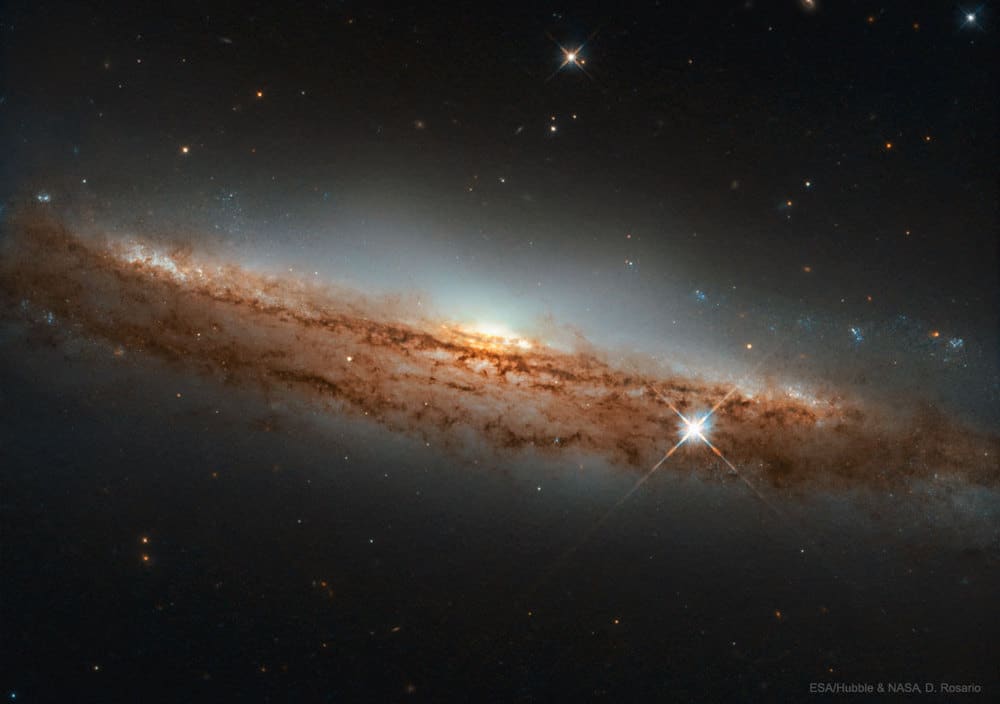
Neil Percival Young OC OM (born November 12, 1945) is a Canadian singer-songwriter. After embarking on a music career in the 1960s, he moved to Los Angeles, where he formed Buffalo Springfield with Stephen Stills, Richie Furay and others. Young had released two solo albums and three as a member of Buffalo Springfield by the time he joined Crosby, Stills & Nash in 1969. From his early solo albums and those with his backing band Crazy Horse, Young has recorded a steady stream of studio and live albums, sometimes warring with his recording company along the way.
Young’s guitar work, deeply personal lyrics and signature tenor singing voice define his long career. Young also plays piano and harmonica on many albums, which frequently combine folk, rock, country and other musical styles. His often distorted electric guitar playing, especially with Crazy Horse, earned him the nickname “Godfather of Grunge“ and led to his 1995 album Mirror Ball with Pearl Jam. More recently Young has been backed by Promise of the Real.
Young directed (or co-directed) films using the pseudonym Bernard Shakey, including Journey Through the Past (1973), Rust Never Sleeps (1979), Human Highway (1982), Greendale (2003), and CSNY/Déjà Vu (2008). He also contributed to the soundtracks of the films Philadelphia (1993) and Dead Man (1995).
Young has received several Grammy and Juno awards. The Rock and Roll Hall of Fame inducted him twice: as a solo artist in 1995 and in 1997 as a member of Buffalo Springfield.[11] In 2000, Rolling Stone named Young the 34th greatest rock ‘n roll artist.
He has lived in California since the 1960s but retains Canadian citizenship. He was awarded the Order of Manitoba on July 14, 2006, and was made an Officer of the Order of Canada on December 30, 2009.
more...Booker Taliaferro Jones Jr. (born November 12, 1944) is an American multi-instrumentalist, songwriter, record producer and arranger, best known as the frontman of the band Booker T. & the M.G.’s. He has also worked in the studios with many well-known artists of the 20th and 21st centuries, earning him a Grammy Award for lifetime achievement. Booker T. Jones was born in Memphis, Tennessee, on November 12, 1944. He was named after his father, Booker T. Jones, Sr., who was named in honor of Booker T. Washington, the educator. Booker T. Jones, Sr. was a science teacher at the school, providing the family with a relatively stable, lower middle-class lifestyle.
Jones was musically a child prodigy, playing the oboe, saxophone, trombone, double bass, and piano at school and organ at church. Jones attended Booker T. Washington High School, the alma mater of Rufus Thomas, and contributed with future stars like Isaac Hayes‘s writing partner David Porter, saxophonist Andrew Love of the Memphis Horns, soul singer/songwriter William Bell, and Earth, Wind & Fire‘s singer/songwriter Maurice White.
more...Samuel Jones (November 12, 1924 – December 15, 1981) was an American jazz double bassist, cellist, and composer.
Sam Jones was born in Jacksonville, Florida, and moved in 1955 to New York City. There, he played with Bobby Timmons, Tiny Bradshaw, Les Jazz Modes, Kenny Dorham, Illinois Jacquet, Freddie Hubbard, Dizzy Gillespie (1958–59) and Thelonious Monk. He is probably best known for his work with Cannonball Adderley (1959–65). He also spent several years working with Oscar Peterson (1966-1970) and Cedar Walton and recorded with Bill Evans in the 1950s. His career primarily revolved around the New York City jazz scene. Jones wrote the jazz standards “Del Sasser” and “Unit 7” while working with Adderley. Other compositions include “Blue Funk”, “O.P.”, “Bittersweet”, and “Seven Minds”.
more...Booker T. Washington “Bukka” White (November 12, 1906 – February 26, 1977)[1] was an African-American Delta blues guitarist and singer. Bukka is a phonetic spelling of White’s first name; he was named after the African-American educator and civil rights activist Booker T. Washington.
White was born south of Houston, Mississippi. He was a first cousin of B.B. King‘s mother (White’s mother and King’s grandmother were sisters). He played National resonator guitars, typically with a slide, in an open tuning. He was one of the few, along with Skip James, to use a crossnote tuning in E minor, which he may have learned, as James did, from Henry Stuckey. He also played piano, but less adeptly.
White started his career playing the fiddle at square dances. He claimed to have met Charlie Patton soon after, but some have doubted this recollection. Nonetheless, Patton was a strong influence on White. “I wants to come to be a great man like Charlie Patton”, White told his friends.
He first recorded for Victor Records in 1930. His recordings for Victor, like those of many other bluesmen, included country blues and gospel music. Victor published his photograph in 1930. His gospel songs were done in the style of Blind Willie Johnson, with a female singer accentuating the last phrase of each line. From fourteen recordings, Victor released two records under the name Washington White, two gospel songs with Memphis Minnie on backing vocals and two country blues.
more...Honoring my dad Mike LaBriola who served in the Army stationed back in his native country of Italy.
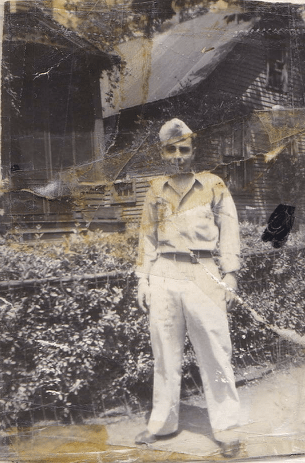
Wilder Community Center for the Elderly in St Paul. November 11th & 13th 945-1145 in Great Room. 1-230 in Day Room.
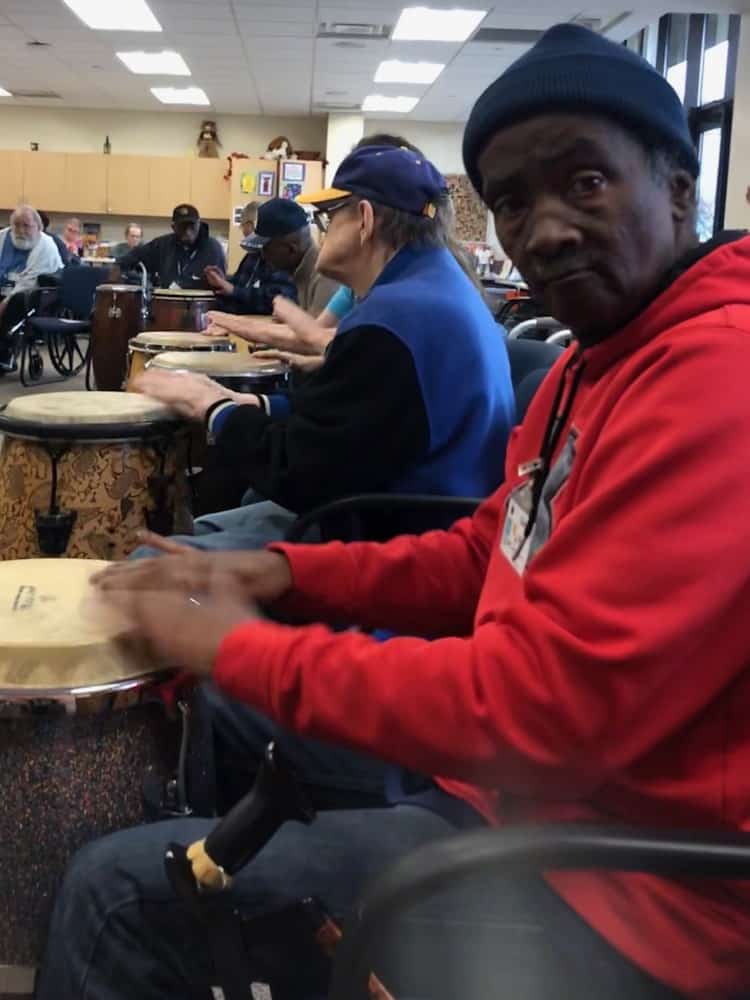
Alnitak, Alnilam, and Mintaka, are the bright bluish stars from east to west (lower right to upper left) along the diagonal in this cosmic vista. Otherwise known as the Belt of Orion, these three blue supergiant stars are hotter and much more massive than the Sun. They lie from 800 to 1,500 light-years away, born of Orion’s well-studied interstellar clouds. In fact, clouds of gas and dust adrift in this region have some surprisingly familiar shapes, including the dark Horsehead Nebula and Flame Nebula near Alnitak at the lower right. The famous Orion Nebula itself is off the right edge of this colorful starfield. This well-framed, 2-panel telescopic mosaic spans about 4 degrees on the sky.
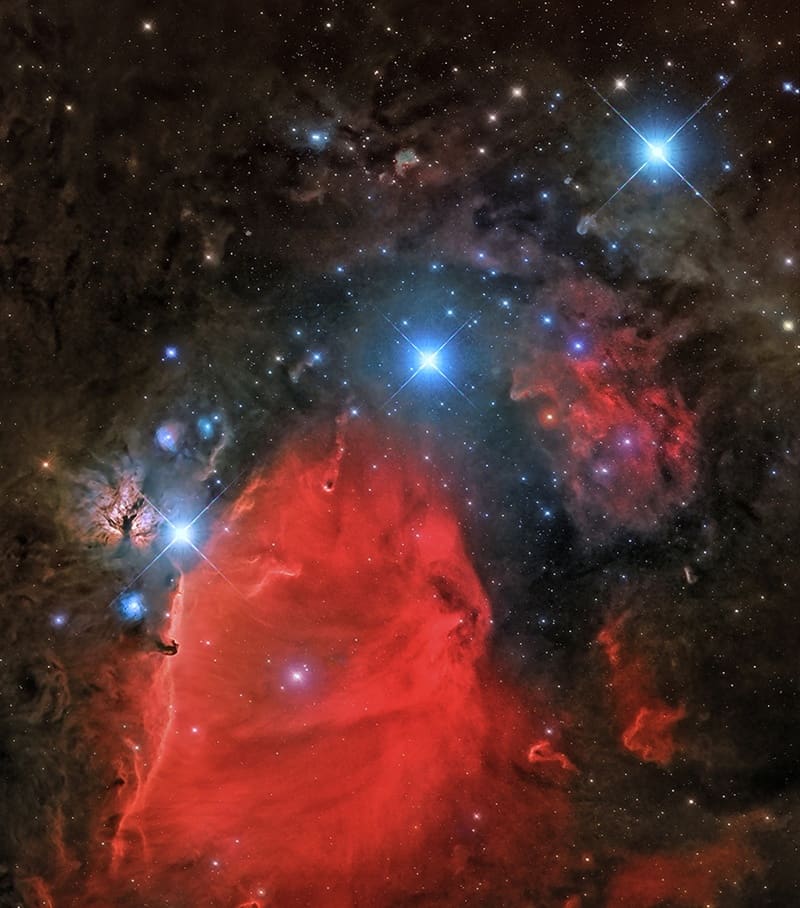
Delores LaVern Baker (November 11, 1929 – March 10, 1997) was an American rhythm-and-blues singer who had several hit records on the pop chart in the 1950s and early 1960s. Her most successful records were “Tweedle Dee” (1955), “Jim Dandy” (1956), and “I Cried a Tear” (1958).
Baker was born Delores Evans in Chicago. Some sources refer to her as Delores Williams, the name by which she was known during her early marriage to Eugene Williams.
more...Walter Louis Garland (11 November 1930 – 27 December 2004) professionally Hank Garland, was an American guitarist and songwriter. He started as a country musician, played rock and roll as it became popular in the 1950s, and released a jazz album in 1960. His career was cut short when a car accident in 1961 left him unable to perform.
Born in Cowpens, South Carolina, Garland began playing guitar at the age of six. He appeared on local radio shows at 12 and was discovered at 14 at a South Carolina record store.
He moved to Nashville at age 16, staying in Ma Upchurch’s boarding house, where he roomed with Bob Moore and Dale Potter. At age 18, he recorded his million-selling hit “Sugarfoot Rag“. He appeared on the Jubilee program with Grady Martin‘s band and on The Eddy Arnold Show. Garland is perhaps best known for his Nashville studio work with Elvis Presley from 1958 to 1961 which produced such rock hits as: “I Need Your Love Tonight”, “A Big Hunk o’ Love”, ” I’m Coming Home”, “I Got Stung”, “A Fool Such As I”, “Stuck on You”, “Little Sister”, “(Marie’s The Name) His Latest Flame”, and “I Feel So Bad”. He worked with many country music rock and roll musicians of the late 1950s and early 1960s, such as Patsy Cline, Brenda Lee, Mel Tillis, Marty Robbins, The Everly Brothers, Boots Randolph, Roy Orbison, Conway Twitty, and Moon Mullican.
more...Ernestine Anderson (November 11, 1928 – March 10, 2016) was an American jazz and blues singer. In a career spanning more than six decades, she recorded over 30 albums. She was nominated four times for a Grammy Award. She sang at Carnegie Hall, the Kennedy Center, the Monterey Jazz Festival (six times over a 33-year span), as well as at jazz festivals all over the world. In the early 1990s she joined Qwest Records, the label founded by fellow Garfield High School graduate Quincy Jones.
Ernestine Irene Anderson (and her twin sister Josephine) were born in Houston, Texas, on November 11, 1928. Her mother, Erma, was a housewife, and her father, Joseph, a construction worker who sang bass in a gospel quartet. By the age of three, Anderson showed a talent for singing along with her parents’ old blues 78 rpm records by the likes of Bessie “The Empress of the Blues” Smith. Anderson started singing at a local church, singing solos in its gospel choir.
Anderson tells of her early life in the 1998 book The Jazz Scene:
- “My parents used to play blues records all the time,” Ernestine Anderson told me. “John Lee Hooker, Muddy Waters, all the blues greats. In Houston, where I grew up, you turned on the radio and what you got was country and western and gospel. I don’t even remember what my first experience with music was. I sort of grew into it. My father sang in a gospel quartet and I used to follow him around, and both my grandparents sang in the Baptist church choir. And they had big bands coming through Houston like Jimmie Lunceford, Billy Eckstine, Erskine Hawkins, and Count Basie.” Ernestine’s godmother entered her in a local talent contest when she was twelve years old. “I only knew two songs,” she admitted, “‘On the Sunny Side of the Street‘ and ‘So Long’. The piano player asked me what key did I do these songs in and I just said ‘C’ for some reason and it was the wrong key. In order to save face I sang around the melody, improvised among the melody, and when I finished one of the musicians told me I was a jazz singer.”
Her family moved to Seattle, Washington, in 1944, when she was 16. Anderson attended Garfield High School, graduating in 1946. While a teenager, she was discovered by bandleader “Bumps” Blackwell, who hired her as a singer for his Junior Band. Anderson’s first show was at the Washington Social Club on East Madison Street. The band (which later included Quincy Jones on trumpet, and a young Ray Charles on keyboard) performed regularly in jazz clubs on Seattle’s Jackson Street.
https://www.youtube.com/watch?v=xiGNHGGsG1M
more...Mose John Allison Jr. (November 11, 1927 – November 15, 2016) was an American jazz and blues pianist, singer, and songwriter. He became notable for playing a unique mix of blues and modern jazz, both singing and playing piano. After moving to New York in 1956, he worked primarily in jazz settings, playing with jazz musicians like Stan Getz, Al Cohn, and Zoot Sims, along with producing numerous recordings.
He is described as having been “one of the finest songwriters in 20th-century blues.” His songs were strongly dependent on evoking moods, with his individualistic, “quirky”, and subtle ironic humor. His writing influence on R&B had well-known fans recording his songs, among them Pete Townshend, who recorded his “Young Man Blues” for the Who‘s Live At Leeds album in 1970. John Mayall was one of dozens who recorded his classic, “Parchman Farm“, and Georgie Fame used many of Allison’s songs. Others who recorded his songs included Leon Russell (“I’m Smashed”) and Bonnie Raitt (“Everybody’s Crying’ Mercy”).
The 1980s saw an increase in his popularity with new fans drawn to his unique blend of modern jazz. In the 1990s he began recording more consistently. Van Morrison, Georgie Fame and Ben Sidran collaborated with him on a tribute album, Tell Me Something: The Songs of Mose Allison. The Pixies wrote the song “Allison” as a tribute.
Allison’s music had an important influence on other artists, such as Jimi Hendrix, J. J. Cale, the Yardbirds, the Rolling Stones, Tom Waits, and Pete Townshend. He was inducted into the Long Island Music Hall of Fame in 2006. Allison was born outside Tippo, Mississippi, on his grandfather’s farm, known as the Island, “because Tippo Bayou encircles it.” He took piano lessons at 5, picked cotton, played piano in grammar school and trumpet in high school, and wrote his first song at 13.
More Posts
- Paul Motian
- Cecil Taylor
- World Music Kyenkyen Bi Adi M’awu
- Daily Roots Rupie Edwards
- Echos of Freedom H.P. Lovecraft
- Cosmo NGC 5530
- Lee Oskar
- Paul McCandless
- Boogie Bill Webb
- Carol Kaye
- Georg Philipp Telemann
- Steve Kuhn
- World Music Elana Sasson · Matthieu Saglio
- Daily Roots Cornell Campbell
- Cosmo Vela SNR
- Chaka Khan
- David Grisman
- Robert Cage
- Louisiana Red
- Stick McGhee